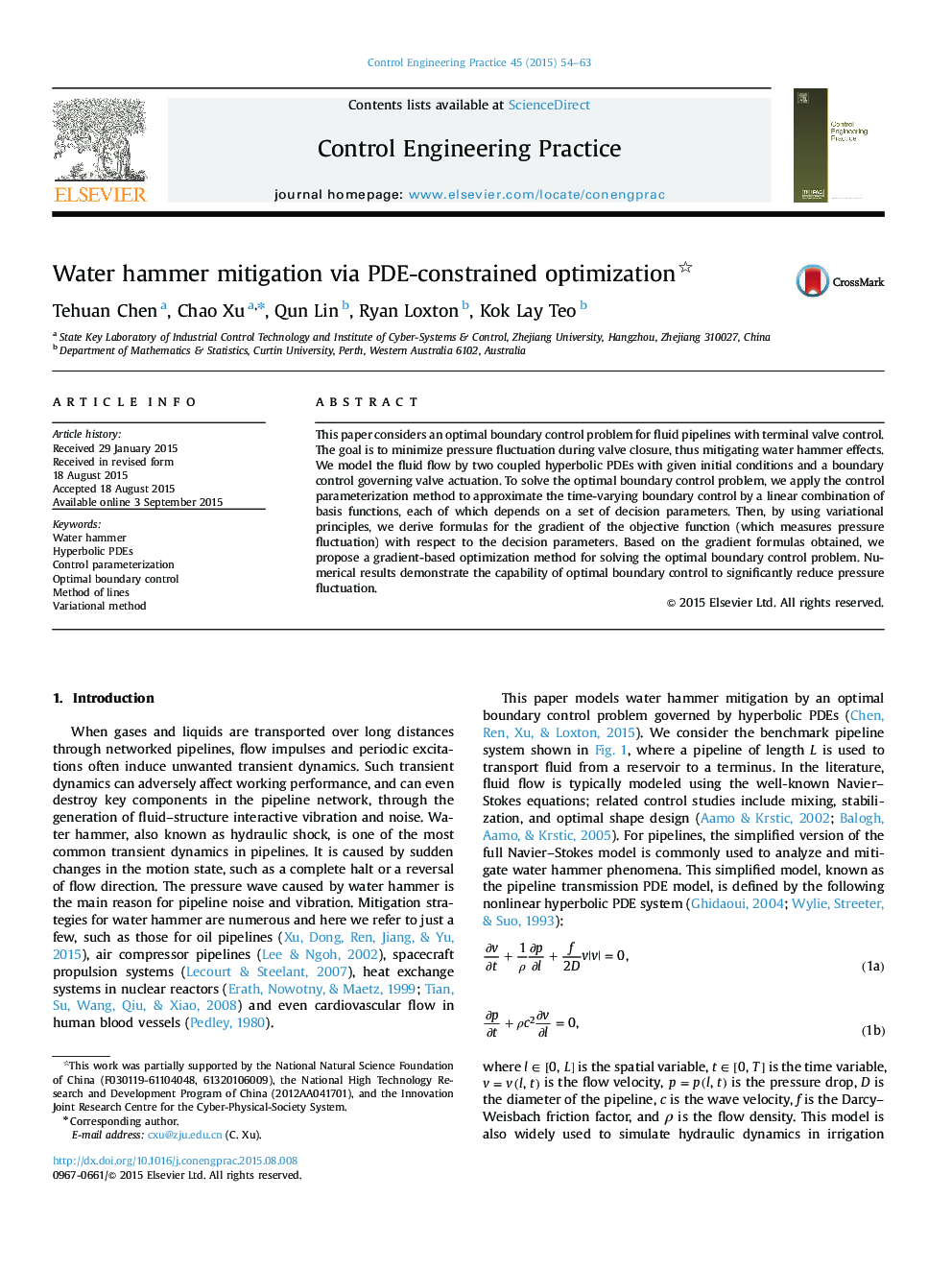| Article ID | Journal | Published Year | Pages | File Type |
|---|---|---|---|---|
| 699256 | Control Engineering Practice | 2015 | 10 Pages |
This paper considers an optimal boundary control problem for fluid pipelines with terminal valve control. The goal is to minimize pressure fluctuation during valve closure, thus mitigating water hammer effects. We model the fluid flow by two coupled hyperbolic PDEs with given initial conditions and a boundary control governing valve actuation. To solve the optimal boundary control problem, we apply the control parameterization method to approximate the time-varying boundary control by a linear combination of basis functions, each of which depends on a set of decision parameters. Then, by using variational principles, we derive formulas for the gradient of the objective function (which measures pressure fluctuation) with respect to the decision parameters. Based on the gradient formulas obtained, we propose a gradient-based optimization method for solving the optimal boundary control problem. Numerical results demonstrate the capability of optimal boundary control to significantly reduce pressure fluctuation.
